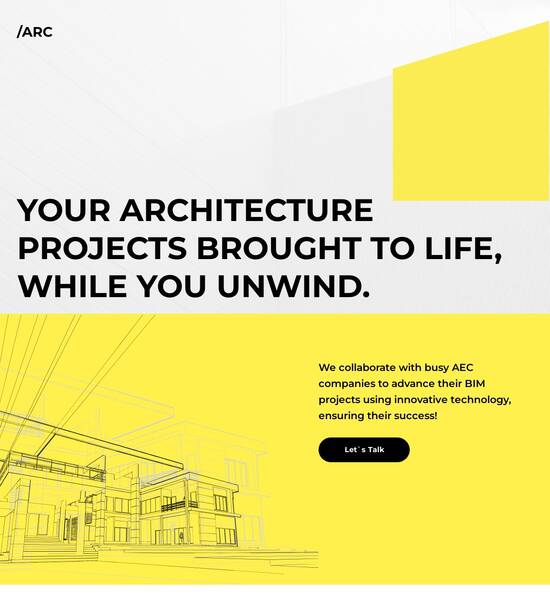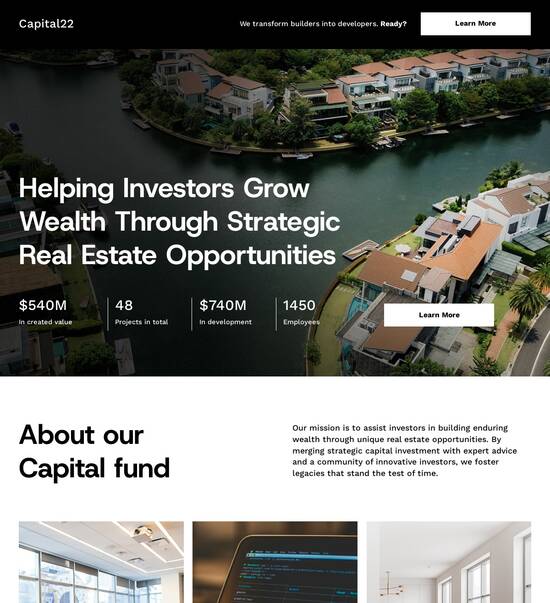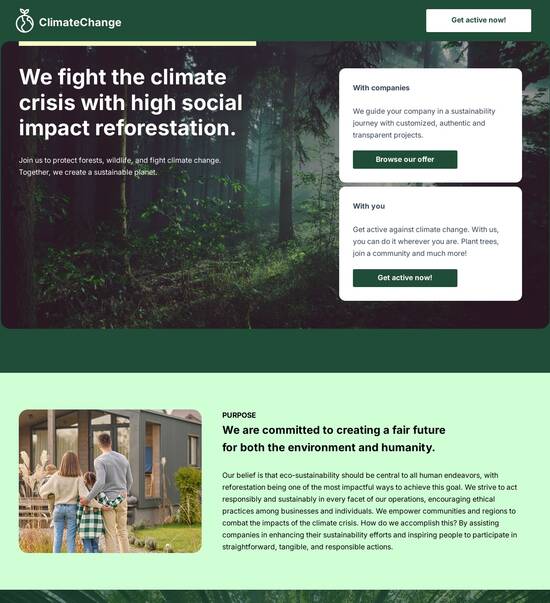
Design Google Chrome-ready podcast page templates
Explore Similar TemplatesAbout template
Choose the best podcast page template for Google Chrome
Recommended templates

Easy to build without coding
With the intuitive drag-and-drop builder, anyone on your team can create high-converting pages without any knowledge of code or design. Make enhancements to your landing page with custom widgets using Javascript, HTML/CSS, or third-party scripts.

Multiple layouts for any industry and goal
Select from 500+ landing page layouts built to boost conversions across industry-specific scenarios. Customize them by adjusting fonts, adding images, and generating on-brand content with the AI assistant. Quickly scale with Instablocks® and Global Blocks that you can save, reuse, and update globally.

Loads fast and looks polished on any device
Every template is responsive, which means they present professionally on any device and load blazingly fast with our Thor Render Engine. You can also power them up with Google AMP technology to deliver an unparalleled mobile experience and drive higher conversions.

Robust analytics & experimentation
Get real-time updates and reporting across all your devices, showing the number of visitors, conversions, cost-per-visitor, and cost-per-lead. Launch AI-powered experiments, run A/B tests, and use heatmaps to analyze user behavior, then optimize your landing page to maximize conversions.







Easy to build without coding
With the intuitive drag-and-drop builder, anyone on your team can create high-converting pages without any knowledge of code or design. Make enhancements to your landing page with custom widgets using Javascript, HTML/CSS, or third-party scripts.
Multiple layouts for any industry and goal
Select from 500+ landing page layouts built to boost conversions across industry-specific scenarios. Customize them by adjusting fonts, adding images, and generating on-brand content with the AI assistant. Quickly scale with Instablocks® and Global Blocks that you can save, reuse, and update globally.
Loads fast and looks polished on any device
Every template is responsive, which means they present professionally on any device and load blazingly fast with our Thor Render Engine.
Robust analytics & experimentation
Get real-time updates and reporting across all your devices, showing the number of visitors, conversions, cost-per-visitor, and cost-per-lead. Launch AI-powered experiments, run A/B tests, and use heatmaps to analyze user behavior, then optimize your landing page to maximize conversions.
All the features you need to build lead-generating landing pages
Explore more featuresLearn how to build top-performing landing pages for any goal
FAQs
Leading the way in building high-performing landing pages





A comprehensive guide to using Instapage for landing page optimization
In a fast-paced digital marketing landscape, utilizing an all-in-one landing page and conversion rate optimization (CRO) platform like Instapage is crucial. This guide will walk you through the imperative steps to maximize your campaign's ROI and leverage the powerful features Instapage offers.
Understanding Instapage's core features
Instapage stands out as a leader due to its comprehensive set of tools. From 100+ customizable templates to built-in optimization capabilities, it’s designed to help marketers craft content that resonates with diverse audiences across various sectors including Tech/SaaS, Education, and Financial Services. The platform helps streamline the creation of high-converting landing pages without needing extensive technical skills.
- Templates & Lead Gen Elements: Accessing over 100 pre-designed templates allows you to quickly deploy landing pages tailored to your audience's needs.
- Landing Pages: The user-friendly builder lets you create landing pages rapidly, ensuring your team can focus on messaging and conversion tactics.
- Optimization: Use robust A/B testing features to improve page performance, leveraging insights from detailed analytics.
Step 1: Launch your first landing page
Starting your landing page creation process with Instapage is intuitive. Begin by selecting a template that resonates with your brand identity.
Step 2: Optimize for performance
After launching, focus on optimizing your landing page to ensure it converts effectively.
- Implement A/B Testing: Routinely test different headlines or calls-to-action to see what works best for your audience.
- Utilize Heatmaps: These show where users click, enabling you to refine page layout for maximum engagement.
- Analytics Dashboard: Analyze traffic sources and user behavior to inform future optimizations.
Step 3: Personalize for better engagement
Creating personalized experiences is vital for increasing conversion rates. Instapage allows for dynamic content delivery based on user data.
- Dynamic Text Replacement: Tailor messaging based on user demographics or referral sources.
- AdMap Alignment: Connect specific ads to targeted landing pages to streamline the user journey.
- Audience-Level Metrics: Monitor how different segments interact with your landing page to further refine your strategy.
In conclusion, leveraging Instapage can drive significant improvements in your marketing efforts. Its user-friendly yet powerful features equip marketers to adjust and succeed in various sectors.
Start your journey with Instapage today and see firsthand how you can create high-performing campaigns that deliver results!
People also ask about Podcast page template optimized for Google Chrome
Podcast page template optimized for Google Chrome
Understanding the podcast page template: An in-depth examination
In the world of digital content, podcasting has emerged as a prominent medium for storytelling, information sharing, and entertainment. However, how a podcast presents itself online can significantly influence listener engagement and growth. A podcast page template designed specifically for platforms like Google Chrome offers an effective way to establish an engaging web presence while optimizing for search engines and user experience.
The evolution of podcast page templates
Historically, podcasting began as an audio-only medium with little focus on web design. Early templates were basic, often consisting of text-heavy pages with limited functionality. As podcasts grew in popularity, there's been a marked evolution in how these pages are structured to cater to a more visually-driven audience.
Growth of podcasts in the digital landscape - The surge in podcast popularity has paved the way for unique podcast page designs that capture audience interest.
Early templates vs. modern needs - Initial templates lacked features like social media integration, mobile responsiveness, and interactive design elements essential for modern users.
Current trends indicate a shift towards user-centric design principles that prioritize accessibility and aesthetic appeal. Creators are now integrating multimedia elements such as video previews and graphics, enhancing the overall user experience.
Key features of the podcast page template
A quality podcast page template should encompass several key features that not only engage users but also boost search engine visibility. Visually engaging layouts are paramount as they can attract potential listeners and keep them on your page longer, thus reducing bounce rates.
Customizable header images - These allow podcast creators to establish a visual brand identity, creating a memorable first impression.
Dynamic episode display formats - Various formats such as grids or lists can cater to different user preferences, showcasing episodes in an appealing manner.
Importance of keywords in podcasts - Strategically chosen keywords help in optimizing podcast content for search engines.
Incorporating meta tags and descriptions - Essential for improving discoverability and enhancing SEO.
Mobile responsiveness is no longer a luxury; it's a necessity. Given the increase in mobile device usage, templates should be designed to look great and function smoothly on smartphones and tablets. Testing how your podcast page appears on Google Chrome’s mobile view can help ensure it meets these critical standards.
Setting up your podcast page template
Choosing the right website template for your podcast can initially seem overwhelming. A structured, step-by-step selection process can simplify this task immensely, allowing you to identify a design that matches not only your content but also your brand identity.
Choosing the right website template match - This involves researching and selecting templates that align with your specific podcast genre and audience.
Fine-tuning design elements to fit brand identity - Adjust colors, fonts, and layouts that reflect your podcast's tone and style.
Integrating content and media comes next. Ensuring that audio files are easily uploaded and accessible helps create a smooth user experience. Moreover, including visual elements like images and videos not only enriches the content but also retains visitor attention longer.
Maximizing subscriber engagement
Drawing in subscribers is crucial for any podcast. Clear call-to-action buttons play an essential role in guiding users toward taking further actions, whether it's subscribing, sharing, or exploring more content.
Strategies for effective calls-to-action - Use compelling language and visible button placement to encourage clicks.
Placement optimization for conversion rates - Experiment with different locations on the page to find where users are most likely to engage.
Incorporating email sign-up forms also plays a vital role in subscriber acquisition. Not only are they effective for gathering contact information, but they also allow for direct updates to interested listeners about new episodes or content.
Leveraging analytics for continuous improvement
Understanding your audience is key to podcast growth. Tracking user engagement metrics provides valuable insights into listening habits and preferences. Various tools available today can help monitor traffic, listener interactions, and demographic information.
Tools for monitoring traffic and interactions - Analytics tools like Google Analytics or podcast-specific platforms can offer deep insights.
Analyzing listener demographics and behavior - Identifying who your audience is can guide your content and marketing strategies.
Iterative design improvements are another aspect that cannot be overlooked. Collecting user feedback through surveys or direct feedback can highlight areas for improvement. Using methods like A/B testing layout variations will allow podcasters to understand which designs drive higher engagement.
Integration with social media and other platforms
To expand your audience, promoting podcast episodes across social media channels is essential. Creating compelling snippets or visuals to entice users to share can help increase visibility.
Strategies for effective social media sharing - Tailor posts to fit each platform's unique audience and standards.
Using visuals and snippets to entice shares - Graphic elements can significantly boost post engagement and shares.
Ensuring designs work on various devices - Cross-platform compatibility guarantees a seamless experience for users, regardless of their device.
Syndication across different platforms, such as blogs and websites, enables podcasts to reach diverse audiences. A well-linked digital ecosystem increases discoverability and listener retention.
The role of customer service in podcast promotion
Effective customer service is paramount for nurturing listener relationships. Ensuring easy access to support strengthens community ties and enhances the overall experience. Incorporating chatbots or live support options on your website can provide instant assistance to any inquiries.
Incorporating chatbots and live support - Quick responses to listener questions can improve satisfaction.
FAQs and help resources for podcasters - Well-organized info helps users find answers without frustration.
Building a community through engagement is another critical component. Creating forums or discussion boards where listeners can connect strengthens listener investment and loyalty. Encouraging interactions among listeners as well as with hosts creates a vibrant podcasting community.
Unique elements of podcast page templates compared to other page types
Podcast pages necessitate unique design considerations due to their focus on audio content. Unlike traditional blog or article pages, it’s essential that these templates facilitate seamless audio playback and easy navigation between episodes.
Unique design considerations for audio-first content - Elements like audio players need to be embedded without disrupting the user experience.
Implementing search functionality on podcast pages - Users should easily find past episodes or discover specific topics.
Organizing content effectively for easy access to past episodes ensures listeners can easily find what they’re looking for. Clear episode navigation can significantly enhance user satisfaction.
Advanced optimization techniques for Google Chrome users
To fully optimize a podcast page template, utilizing Chrome extensions designed for web developers can streamline the design process. These tools can provide functionalities that enhance performance and improve user experience.
Recommended tools for streamlining development - Extensions that help with testing, debugging, and speed optimization can be invaluable.
Enhancing user experience through Chrome-friendly features - Features like dark mode or browser notifications can heighten engagement.
Staying current with Google Chrome updates is crucial. These updates can inadvertently affect web design functionality, so it's essential to ensure ongoing compatibility and security. Regularly testing your podcast page will help maintain a positive user experience and safeguard its performance.
Future trends in podcast page templates
As technology continues to advance, so too will user preferences for how they consume content. Anticipated changes in design aesthetics and functionality suggest a shift towards immersive experiences incorporating AI and personalized content delivery.
Predictions for design aesthetics and functionality - Expect more interactive elements and personalized experiences for users.
Preparing for an evolving podcast landscape - Adaptive designs that allow for various media formats could reshape how podcasts are presented.
Understanding the importance of listener feedback will be critical for continuous evolution. Adapting to the needs of your audience ensures that your podcast remains relevant and compelling in an increasingly competitive landscape.
Ready to skyrocket conversions?
Supercharge your ad campaigns with high-performing landing pages
Get started














